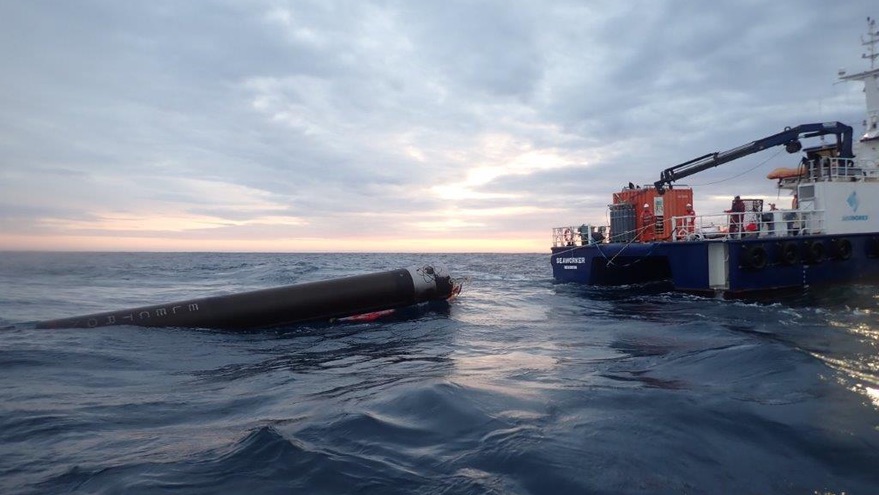WASHINGTON — Rocket Lab says its attempt to recover the first stage from its latest Electron launch was a “complete success,” but that the company still has work to do before it’s ready to attempt to reuse the stage.
On Rocket Lab’s latest launch Nov. 19, the rocket’s first stage made a controlled reentry after stage separation, then released a drogue and a main parachute before splashing down about 400 kilometers downrange from its New Zealand launch site, where it was recovered by a boat.
The recovery itself went as planned. “The test was a complete success,” Peter Beck, chief executive of Rocket Lab, said in a call with reporters Nov. 23. “The stage splashed down completely intact. What it proved to us is that this is a feasible approach, and we’re really confident that we can make Electron a reusable launch vehicle from here.”
The various steps in that reentry process went as expected, with the stage splashing down at the targeted location and at a speed of nine meters per second. The biggest problem, he said, were rough seas that created a “pretty tough recovery operation” of the stage after splashdown.
That stage is now back in Rocket Lab’s factory, where engineers, he said, “are really just starting to dissect everything.” That includes removing individual components for testing and, in some cases, requalifying them for flight on later launches.
One area of improvement, he acknowledged, is the thermal protection system at the base of the stage. “We knew that the thermal protection system on the vehicle was not perfect because we didn’t have the data,” he said. During reentry “it got pretty roasty down there, as we kind of expected.” That included heat shield panels that were blown out, exposing the engines.
Rocket Lab will fold those and other improvements into the next recovery test, which Beck said will take place on an Electron launch in early 2021. That will be similar to this one in that the stage will splash down and be recovered by a boat for testing. That will continue, he said, until the recovered stages are in “premium condition,” at which point it will shift to midair recovery of the stages using a helicopter.
Once stages are recovered in midair, Rocket Lab will be ready to start reusing them. Beck said the company hoped to be able to do so before the end of 2021, although some launches next year will include components that first flew on this and other recovered stages. “It’s probably a little bit early to predict” when the first reused stage will launch, he said, “but we’d certainly would love to try to get a whole stage next year.”
Beck predicted the company would fly a mix of expendable and reusable missions, even after Rocket Lab demonstrates reusability. Most of the changes needed for recovery of the stage, such as parachutes and avionics, are located in an interstage section between the first and second stages, and the company is producing separate versions of that interstage for recovery and non-recovery launches. The recovery hardware does reduce the vehicle’s payload by about 10 kilograms now, with an additional 5 to 10 kilograms reduction once all the recovery systems are added.
Changes to the first stage itself, like the improved heat shield, will likely be used for both expendable and reusable missions. “We certainly hope that the majority of the missions are recovery missions,” he said. “There’s no point in only recovering 1 in every 10.”
While Rocket Lab was motivated to pursue reusability as a means of increasing its flight rate without having to expand its factory, the ability to reuse vehicles could drive down costs and change the economics of smallsat launch. He compared dedicated small launch systems like Electron to services like Uber, contrasting them to secondary payload opportunities that, like buses, are less expensive but also less flexible.
“If you can do what an Uber does for the same cost as the bus, then that has a really big impact on the economics,” he said. “That’s probably what I’m most excited about with respect to reusability.”
